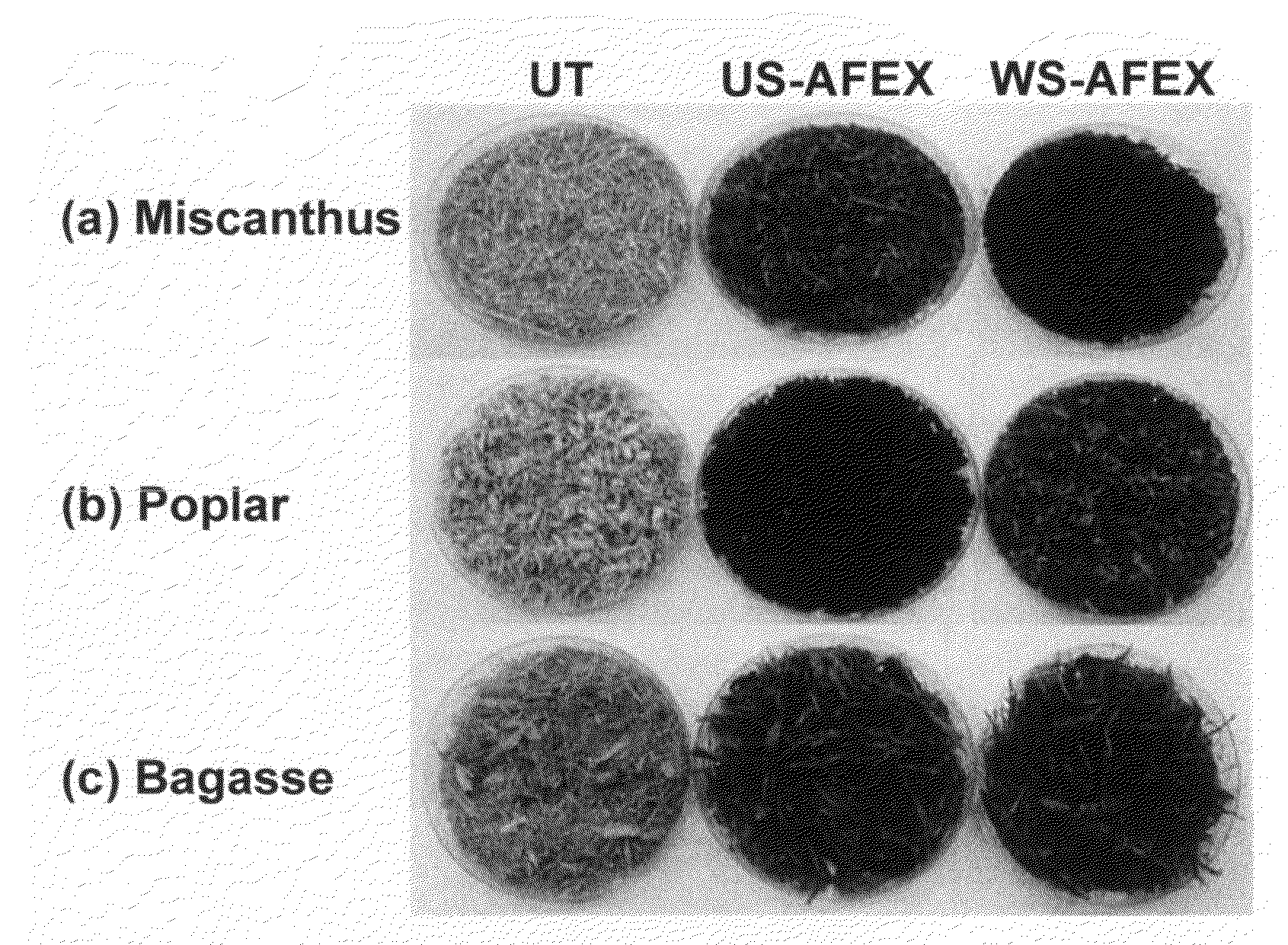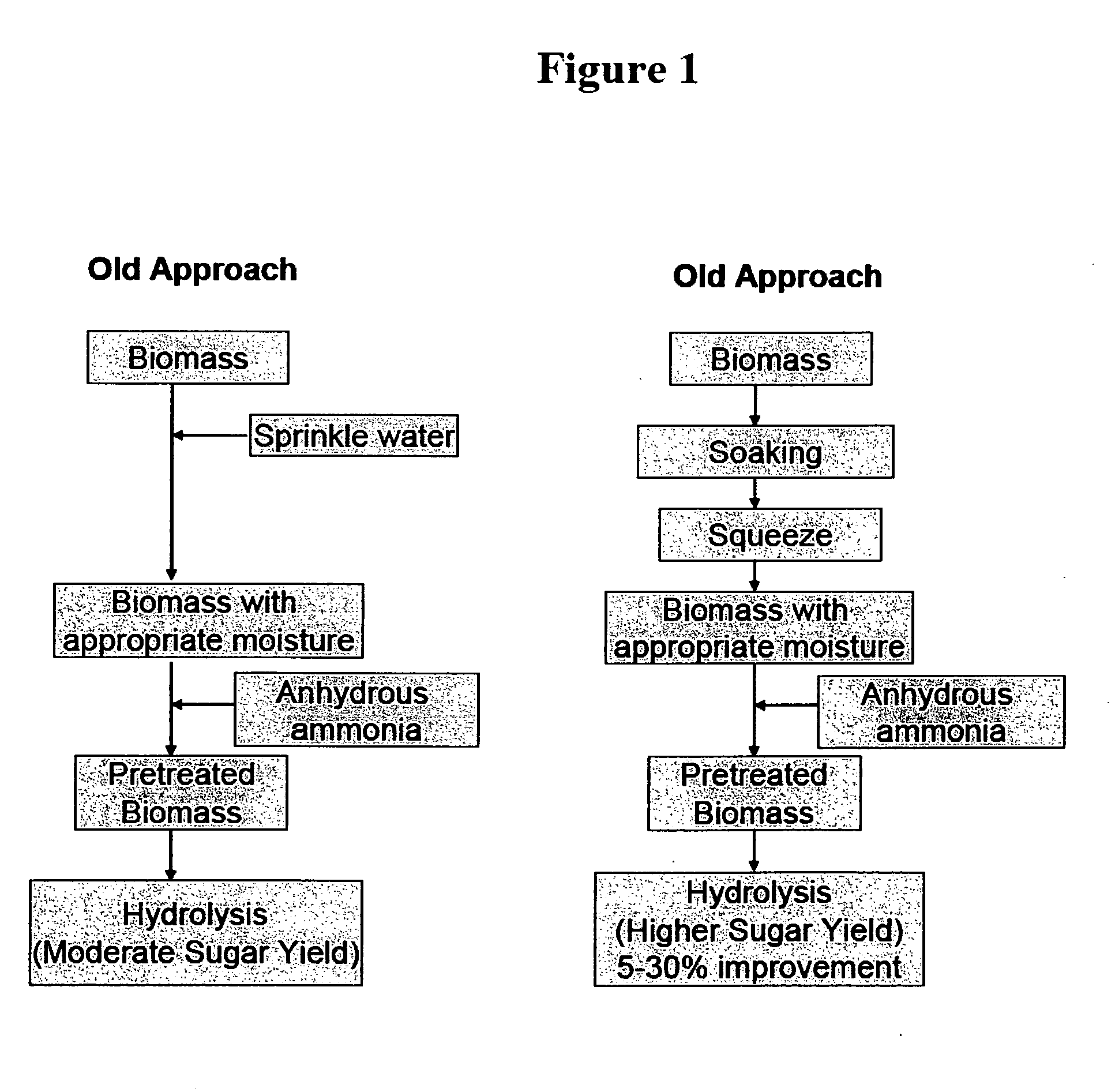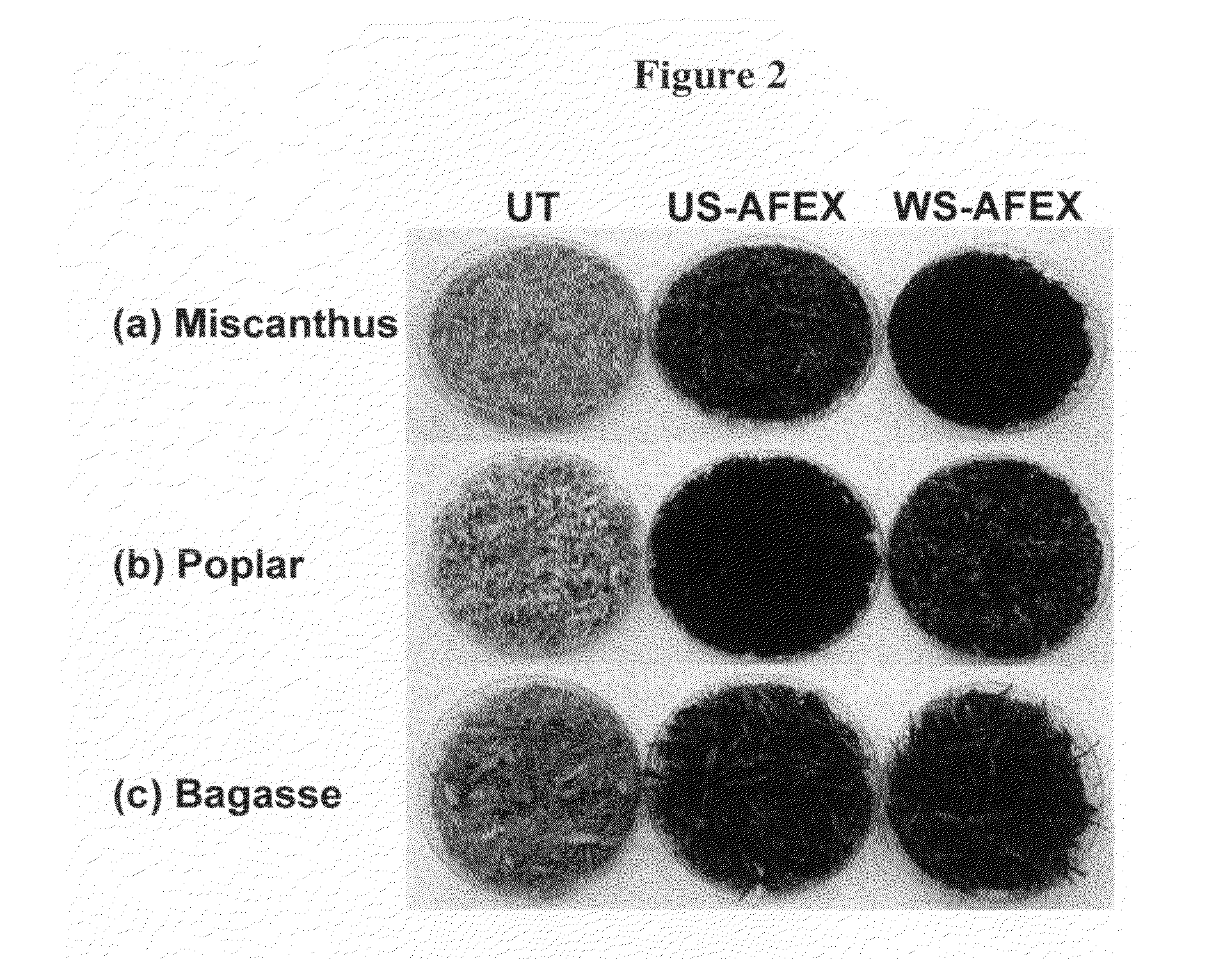Process for producing sugars from cellulosic biomass
a cellulosic biomass and cellulosic technology, applied in the direction of biofuels, fermentation, etc., can solve the problems of low sugar and resulting yield, low yield, and straight, stable heterogeneous supramolecular structure, etc., to improve sugar production, increase water within the biomass, and relieve pressure
- Summary
- Abstract
- Description
- Claims
- Application Information
AI Technical Summary
Benefits of technology
Problems solved by technology
Method used
Image
Examples
examples 1 , 2 and 3
EXAMPLES 1, 2 and 3
Materials and Methods
[0036]Lignocellulosic Substrate—Miscanthus×giganteus, was provided from Professor Steven P. Long, University of Illinois, Urbana-Champaign and was stored under dry conditions at room temperature until further use. This material was milled using a JT Homoloid mill from the Fitzpatrick Co. with a 3.175 mm diameter sieve. The moisture content was measured using a moisture analyzer (A&D, Model MF-50). Premilled poplar samples were received from NREL, Denver, Colo. and bagasse from MBI, Lansing, Mich.
[0037]Compositional Analysis. The NREL standard protocol for acid hydrolysis (LAP-019) was used to determine the glucan and xylan content. The composition of the untreated biomass was as follows: Poplar (45% glucan and 18% xylan), Miscanthus (44% glucan and 19% xylan) and Bagasse (35% glucan and 19% xylan). The conversions reported here were therefore based on these glucan and xylan contents unless samples were soaked or washed.
[0038]Soaking. Prior to ...
example 4
[0050]The effect of pretreatment and enzymatic saccharification of Miscanthus to produce fermentable sugars was further investigated. Sugar yields during enzymatic hydrolysis from ammonia fiber expansion (AFEX) pretreated Miscanthus is investigated. Pretreatment conditions including temperature, moisture, ammonia loading, residence time and enzyme loadings are varied to maximize hydrolysis yields. In addition, further treatments such as soaking the biomass prior to AFEX as well as washing the pretreated material were also attempted to improve sugar yields. The optimal AFEX conditions determined were 160° C., 2:1 (w / w) ammonia to biomass loading, 233% moisture (dry weight basis), and 5 minute reaction time for water soaked Miscanthus. Approximately 96% glucan and 81% xylan conversions were achieved after 168-hr enzymatic hydrolysis at 1% glucan loading using 15 FPU / g glucan of cellulase and 64 p-NPGU / g glucan of beta-glucosidase along with xylanase and tween-80 supplementation. A mas...
PUM
 Login to View More
Login to View More Abstract
Description
Claims
Application Information
 Login to View More
Login to View More - R&D
- Intellectual Property
- Life Sciences
- Materials
- Tech Scout
- Unparalleled Data Quality
- Higher Quality Content
- 60% Fewer Hallucinations
Browse by: Latest US Patents, China's latest patents, Technical Efficacy Thesaurus, Application Domain, Technology Topic, Popular Technical Reports.
© 2025 PatSnap. All rights reserved.Legal|Privacy policy|Modern Slavery Act Transparency Statement|Sitemap|About US| Contact US: help@patsnap.com



